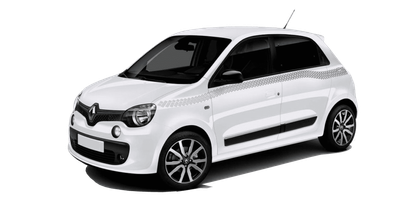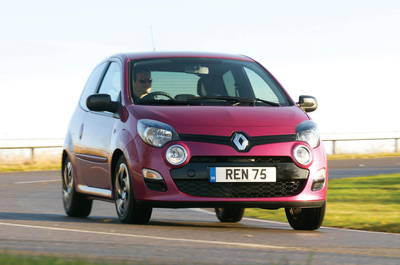

Renault Twingo specs in Portugal
Found 312 cars
From €550 to €19 250
€8 735 (average)
Learn more about Renault Twingo specs in Portugal. Find the best used Renault Twingo cars for sale from the best car dealers and private sellers.
2011 - 2014
The Renault Twingo Generation 2, with its facelift in 2011, brought an updated look and improved features to the much-loved compact car. Renault, a renowned French automaker, introduc...
RS Hatchback 3 Doors
1.2 AMT (75 hp)
1.2 MT (75 hp)
1.2 T MT (102 hp)
1.5 dCi MT (85 hp)
| Name | Value | Unit |
|---|---|---|
| Acceleration (0-100 km/h) | 13.6 | s |
| Back suspension | Semi-dependent, spring | |
| Body type | Hatchback | |
| Capacity | 1149 | cm3 |
| City driving fuel consumption per 100 km | 7.3 | l |
| Cruising range | from 550 to 850 | km |
| Curb weight | 903 | kg |
| Cylinder bore | 69 | mm |
| Cylinder layout | Inline | |
| Drive wheels | Front wheel drive | |
| Emission standards | EURO IV | |
| Engine power | 75 | hp |
| Engine type | Gasoline | |
| Front brakes | Disc | |
| Front suspension | Independent, McPherson Struts, spring, Stabilizer bar | |
| Front track | 1400 | mm |
| Fuel | 98 | |
| Fuel tank capacity | 40 | l |
| Full weight | 1370 | kg |
| Gearbox type | robot | |
| Ground clearance | 120 | mm |
| Height | 1470 | mm |
| Highway driving fuel consumption per 100 km | 4.7 | l |
| Injection type | Multi-point fuel injection | |
| Length | 3687 | mm |
| Maximum torque | 107 | N*m |
| Max power at RPM | to 5 500 | RPM |
| Max speed | 172 | km/h |
| Max trunk capacity | 959 | l |
| Min trunk capacity | 230 | l |
| Mixed driving fuel consumption per 100 km | 5.6 | l |
| Number of cylinders | 4 | |
| Number of doors | 3 | |
| Number of gear | 5 | |
| Number of seater | 4 | |
| Payload | 467 | kg |
| Rear brakes | drum | |
| Rear track | 1348 | mm |
| Stroke cycle | 76.8 | mm |
| Turning circle | 10.2 | m |
| Turnover of maximum torque | to 4 250 | RPM |
| Valves per cylinder | 4 | |
| Wheelbase | 2367 | mm |
| Width | 1654 | mm |
